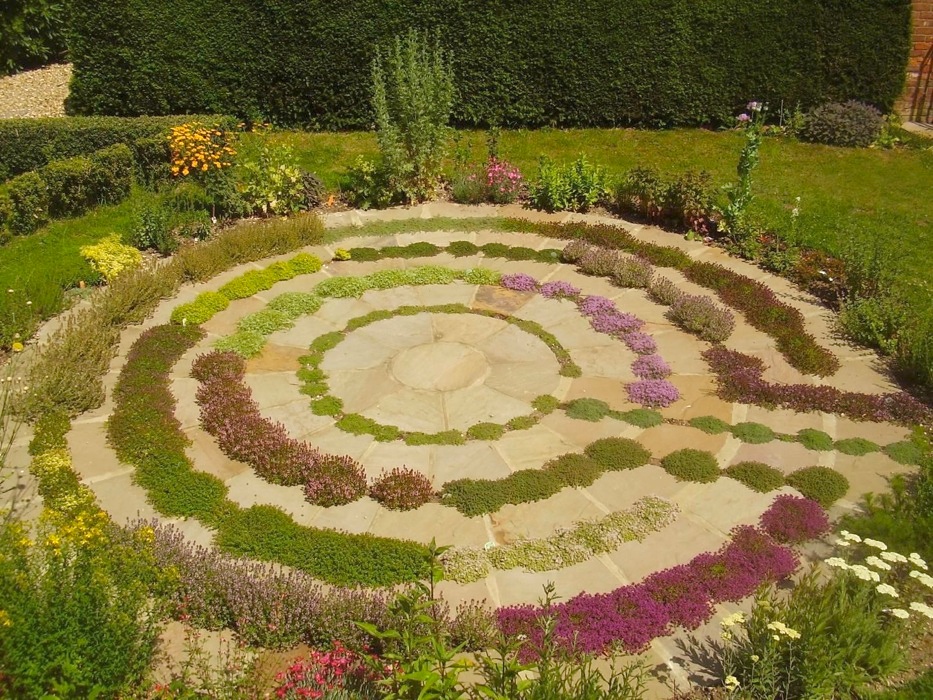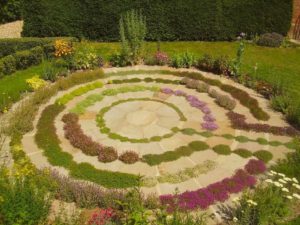
Using the Labyrinth as a Spiritual Tool
 I have a special relationship with the labyrinth. I was first introduced to this amazingly spiritual tool in the summer of 2005 in Colorado Springs, CO. I was immediately captivated by this wonderful process that integrates our physical body with our mind and spirit. It truly opened up the channels of communication between me, my higher power, and my inner being – and as I walked the labyrinth for the first time that summer, I could feel my inner wisdom flowing through me.
I have a special relationship with the labyrinth. I was first introduced to this amazingly spiritual tool in the summer of 2005 in Colorado Springs, CO. I was immediately captivated by this wonderful process that integrates our physical body with our mind and spirit. It truly opened up the channels of communication between me, my higher power, and my inner being – and as I walked the labyrinth for the first time that summer, I could feel my inner wisdom flowing through me.
This powerful experience led me to seeking out every labyrinth I could find in my immediate area – and to this day, I use the labyrinth when I feel the need to be one with nature, my higher power, and my inner being.
A labyrinth is an ancient symbol that relates to wholeness. It combines the imagery of the circle and the spiral into a meandering, but purposeful path. The labyrinth represents a journey to our own center and back again – and out into the world.
Labyrinths have long been used as meditation and prayer tools. They can be found across the world at spiritual retreat centers, in places of worship, and in gardens.
A labyrinth is an archetype with which we can have a direct experience. We can walk it. It serves as a metaphor for life’s journey. It’s a symbol that creates a sacred space and place – and takes us out of our ego and into the depths of our inner being.
Labyrinths and mazes have often been confused. When most people hear of a labyrinth, they think of a maze.
A labyrinth is not a maze. A maze is like a puzzle to be solved. It has twists, turns, and blind alleys. It’s a left-brain task that requires logical, sequential, analytical activity to find the correct path into the maze and out.
A labyrinth has only one path. It is unicursal. The way in is the way out. There are no blind alleys. The path leads you on a circuitous path to the center and out again.
A labyrinth is a right-brain task. It involves intuition, creativity, and imagery. With a maze, many choices must be made and an active mind is needed to solve the problem of finding the center. With a labyrinth, there is only one choice to be made. The choice is to enter – or not. A more passive, receptive mindset is needed. The choice is whether or not to walk a spiritual path.
At its most basic level, the labyrinth is a metaphor for the journey to the center of your deepest self – and back out into the world with a broadened understanding of who you are.
There is no right way to walk a labyrinth. You only have to enter and follow the path. However, your walk can encompass a variety of attitudes. It may be joyous or somber. It might be thoughtful or prayerful. You may use it as a walking meditation.
When you walk a labyrinth, choose your attitude. And from time to time, choose a different attitude. Make it serious, prayerful, or playful. Sing or speak out loud. Walk alone or with a crowd. Notice the sky. Listen to the sounds. But most of all, pay attention to your experience.
Some general guidelines for walking a labyrinth are:
- Focus – Pause and wait at the entrance. Become quiet and centered. Give acknowledgment through a bow, nod, or other gesture and then enter.
- Experience – Walk purposefully. Observe the process. When you reach the center, stay there and focus several moments. Leave when it seems appropriate. Be attentive on the way out.
- Exit – Turn and face the entrance. Give an acknowledgement of ending, such as “Amen,” “Namaste,” or “Thank you.”
- Reflect – After walking the labyrinth, reflect back on your experience. Use journaling or drawing to capture what you gained from the experience.
As you ponder the questions in your own life, consider using a labyrinth as a way to connect with your inner wisdom. Then follow your experience by writing in your journal.


8 Comments
Bonnie Nussbaum
I LOOOOVE this post, Tina! I walked the labyrinth at the Norbertine Abbey here in Green Bay, Wisconsin earlier this week and it was lovely. My mind quiets and I’m able to see the issues facing me much more clearly. I so appreciate you writing about this.
Cher
Tina,
I’ve learned quite a bit from this article. As usual, your prompts invited me to explore a decision I’ve been pondering.
Thank you,
Cher
Masteryouraccent.com
Jill Greinke
I enjoyed reading this very much Tina! Such an interesting subject.
Teena
Tina ~ Lovely post and I learned some very interesting tips for using a labyrinth and feel inspirited to search for one near by to experience!
Thank you!
Teena
http://www.coupletherapyconnection.com
Sangita
Hi Tina,
Beautiful and wisdom filled post about labyrinth and our journey. I learned a lot about labyrinth that I was not aware of. Thank you for sharing 🙂
Dorothy Fitzer
Love it Tina. I first started working with this in imagery 20 years ago along with mythology. So rich and such a beautiful way to access the depths of our unconscious.
Pam Kachelmeier MA, PC, LC
I have walked many Labyrinths and love them, even ones on a floor canvas. My clients walk one of my horses through a Labyrinth on my premises in different workshops I facilitate, totally different feeling.
Pingback: